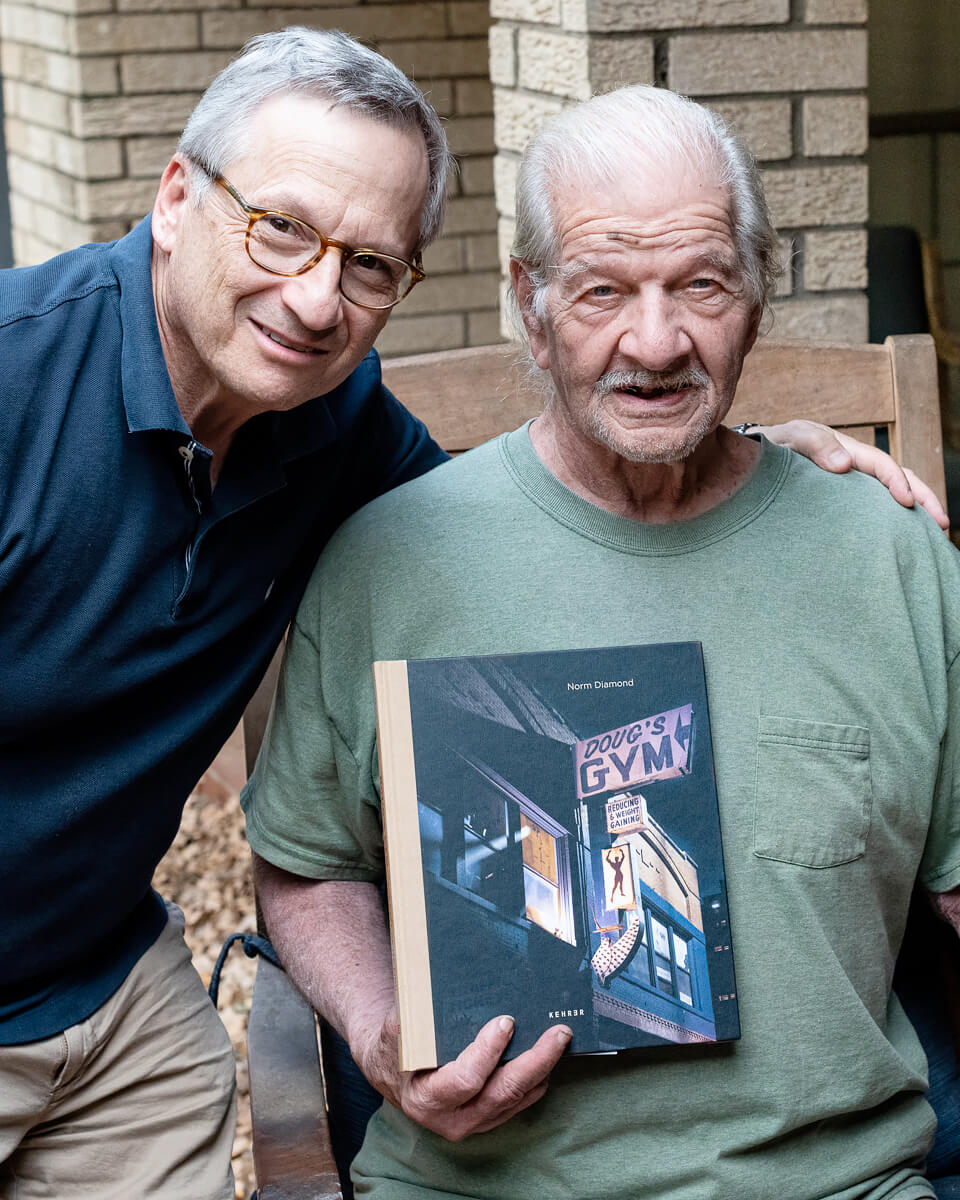Norm Diamond spent thirty years as an interventional radiologist in Dallas, Texas. Treating severely ill and injured patients on a daily basis had a profound effect on him, which he came to fully understand when he retired and began his second career as a fine art photographer. Mentored by Cig Harvey since 2013, he began making work focused on themes of memory, loss, and isolation. In his first major project, What Is Left Behind - Stories from Estate Sales, he visited several hundred estate sales searching for and photographing objects left by one generation for the next. Daylight Books published this work as a monograph in 2017.
In his next series, Doug's Gym, he chronicled the last six months of a dilapidated, yet beautiful old gym in downtown Dallas. It was owned by 87-year-old Doug Eidd, who had run the gym since 1962. Both he and the gym came from a bygone era never to be seen again. Kehrer Verlag published Doug's Gym in 2020.
Diamond has now returned to an old project, Dark Planet. It reflects his worldview drawn from his experiences as a physician, his family background, and current events. The images reflect the same themes he has photographed for his two previous projects, but they are not tethered to specific locations or settings.
Diamond was named a finalist in the Photolucida Critical Mass competitions of 2015, 2016, 2018, 2019, and 2020. The Afterimage Gallery in Dallas and the Cumberland Gallery in Nashville have hosted solo shows of his work. His prints are in the hands of private collectors and have also been shown in multiple galleries and museums including Ogden Museum of Southern Art, Griffin Museum of Photography, Masur Museum of Art, Houston Center for Photography, Center for Fine Art Photography, and Center for Photographic Art.
Doug's Gym: The Last of Its Kind By Norm Diamond
Doug's Gym: The Last of Its Kind
Norm Diamond What Is Left Behind: Stories From Estate Sales
